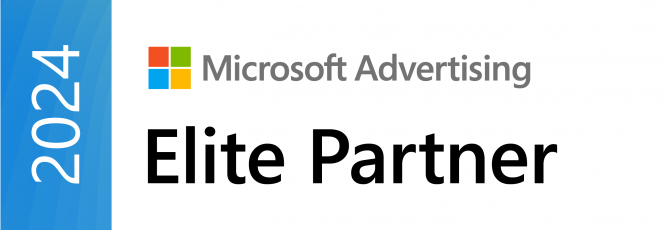
Improve your PPC performance with these analysis tips
PPC competitor analysis is often overlooked. But with campaign performance and budgets being key areas of concern for advertisers, it shouldn’t be.
Fundamentally, your competitors’ PPC activity affects yours. Their strategy might be stopping your ads from performing as well as they could be and causing your cost per click (CPC) to rise.
This is due to the infamous PPC bidding model. Keywords are put up for ‘auction’ and advertisers, like yourself, ‘bid’ on these terms and phrases with hopes that your offer trumps those of other interested bidders. The winner gets one of the coveted top four ad places on search engine results pages (SERPs).
Naturally, the more sought-after a keyword, the more competitors you’ll have bidding for it and if there are bigger fish in said bidding pool, the stakes can be raised quite quickly, causing price offers to skyrocket and CPC to become incredibly expensive.
So, with spy glasses at the ready, it’s time to take a closer look at whether your competitors’ activity is affecting your ad performance.
There are a number of tools, strategies and tactics you can use to gauge a better understanding of what your competitors are doing, which you can then use to inform improvements to your activity. In this way, you can expect to see greater returns and lower costs – and who wouldn’t want that?
But before you begin any competitive analysis, you must first understand who your PPC competitors are.
While you may have a clear idea of your competitors from a commercial standpoint – i.e. those who sell a similar product or service – PPC competitors go beyond this.
While these are still technically competitors, it’s not to say they are all using PPC advertising. Therefore, a direct competitor in the physical realm or organic results, isn’t a PPC competitor as you are not fighting them for the top of page sponsored spot.
PPC competitors are those bidding on the same keywords as you. In fact, they might even be bidding on your brand name or branded terms, like you might be on theirs.
Included in this could be affiliates, partners and resellers who stock your products or are promoting your business. Technically, these links are helping your brand, but where the issue arises is when they are directing users to the same URL. Search engines categorise all ads with the same URL as one – as you.
While this might not necessarily impact traffic to your website, it can impact CPC as there are an increased number of bidders, who should all be working together, but are instead pushing prices up.
If this is the case, you may want to share and discuss PPC strategies with any affiliates and partners in order to get the most out of your budgets.
Now, with an understanding of who your competitors are, here’s how you can assess their activity to improve your PPC performance:
Data collection and reporting should be nothing new for any marketer tasked with PPC management. But while you may have narrowed your monitoring down to just a few key metrics and KPIs that provide relevant insight for your business, expanding the selection can give you a more detailed overview of where you stand.
For example, the following metrics compare your activity against competitors’:
With so much data to look at, the task of PPC reporting can become tedious and time consuming. Luckily, platforms such as Diginius pull through data from Google Ads and Bing Ads, and offer automation options, whereby you can filter and select metrics and then have reports created and emailed directly to you.
Having a quick look over key statistics becomes second nature.
Similarly, you can set up rules and triggers that alert you to changes in performance. Enabling these for your top performing keywords can help to ensure the returns you are getting from them do not slip.
Tools and data platforms, such as Diginius Insight can also be used to perform a more in-depth competitor analysis.
While the above metrics provide an indication of how you’re performing against the competition, these tools provide greater transparency on things such as what keywords they are targeting, for example.
This gives you actionable insight that can go on to influence your bidding decisions or other campaign strategies, such as geotargeting to ensure your ads have the best chance at being shown to relevant audiences.
It might sound like PPC is simply a flash of cash in a battle of the highest bidder. Wrong.
While money-making is a commercial goal for search engines, they also strive to provide excellent user experience by serving content and results that are highly relevant and entirely tailored to each searcher.
Therefore, when deciding which ad to serve, search engines take into consideration much more than simply who is willing to spend more. Rather, things such as ad copy and landing page content are also determining factors.
So, if competitors’ ads are being shown above yours for keywords you are bidding high on, it’s time to dig a little deeper.
Determine what other strategies these competitors have in place. This might be the way ads are worded, their use of calls to action or even their landing page optimisation approach.
With a better understanding of what it is they’re doing, you can then go back and revisit your strategy and implement actions that will improve your performance without having to increase your spend.
Overall, competitive analysis is an incredibly useful PPC management activity that could save you time and money, as well as providing you with a better understanding of your market. So, the next time you want to improve your PPC performance, why not do exactly that by taking a look at your competitors?
For more advice or assistance with PPC competitor analysis or any other PPC management activity, don’t hesitate to get in touch with our expert team.







© 2024 Diginius Ltd. All rights reserved.

Chester Yang is the Microsoft Program Manager at Diginius with a background in economics and quantitative research.
At Diginius, Chester focuses on nurturing partnerships with PPC agencies and integrating marketing and sales solutions.